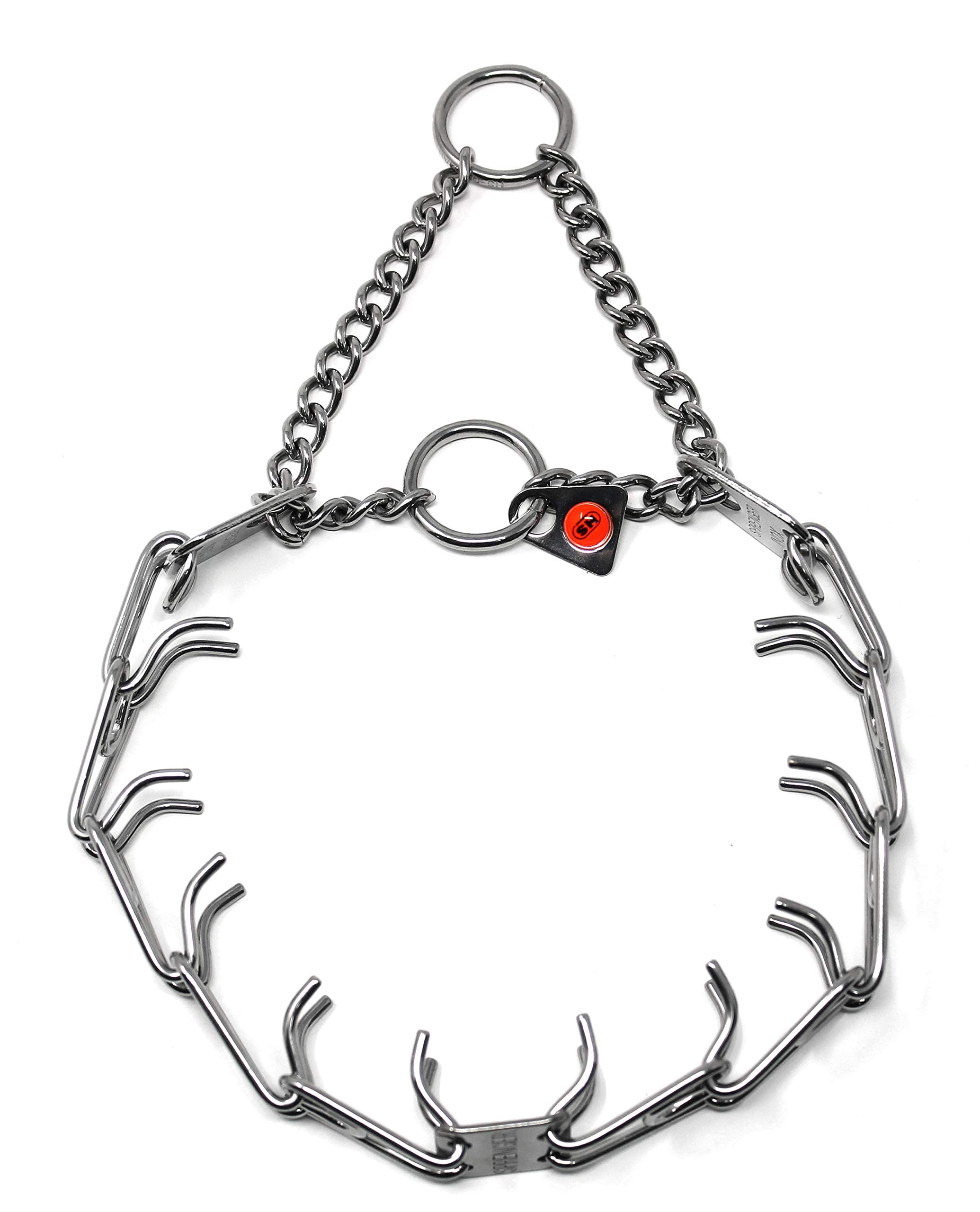The use of prong collars on dogs has been the subject of controversy and debate in the dog training world for years. While proponents argue that prong collars are effective tools for controlling dog behavior, opponents argue that they can cause physical and psychological harm to dogs. In evaluating the ethics of using prong collars on dogs, it is important to consider the benefits, consequences, alternatives, and public perception of these collars.

The Benefits of Using Prong Collars on Dogs
One of the main benefits of using prong collars on dogs is their effectiveness in controlling dog behavior. Prong collars work by applying pressure to the dog’s neck when they pull on the leash or try to lunge at something. This pressure mimics the pressure a mother dog would use to correct her puppies, and can be an effective way to communicate with a dog. Prong collars can be especially useful for large and strong dogs that are difficult to control with a regular collar or harness.
Another benefit of using prong collars is their flexibility. Prong collars can be adjusted to fit a variety of neck sizes, making them a versatile tool for dog trainers. Additionally, prong collars can be easier to use than other training tools, such as choke chains, which require a specific technique to be effective.
The Consequences of Using Prong Collars on Dogs
While prong collars can be effective tools for controlling dog behavior, they can also cause physical and psychological harm to dogs. One of the main concerns is the physical harm they can cause. Prong collars can cause injuries to the neck, skin, and spinal cord. Improper use or fitting of the collar can also lead to more serious injuries, including nerve damage and choking. Another concern is the psychological harm they can cause. Prong collars can cause anxiety, fear, and aggression in some dogs, which can lead to more serious behavior problems in the long run.
It is also important to consider the ethical implications of using prong collars on dogs. Some argue that using prong collars is a form of punishment, which goes against the principles of positive reinforcement training. Others argue that prong collars can be harmful to dogs, and that their use should be avoided in favor of more humane training methods.
The Alternatives to Using Prong Collars on Dogs
There are several alternatives to using prong collars on dogs that are less harmful and more ethical. One alternative is positive reinforcement training, which involves rewarding good behavior instead of punishing bad behavior. Positive reinforcement training can be highly effective and can strengthen the bond between the dog and the owner. Another alternative is the use of harnesses or head collars, which can be more comfortable and less harmful to the dog’s neck. These alternatives can be effective for controlling dog behavior without causing physical or psychological harm to the dog.
The Public Perception of Prong Collars
The public perception of prong collars is an important factor to consider when evaluating their use on dogs. Prong collars have a negative reputation among many dog owners and animal welfare organizations. They are often associated with harsh and punitive methods of dog training, which can lead to a negative perception of dog training in general. This negative perception can be harmful to the relationship between dog owners and their pets, as well as to the reputation of the dog training industry as a whole.
It is important for dog trainers to consider the public perception of prong collars and to use them in a responsible and ethical manner. This may involve educating dog owners about the proper use and fitting of prong collars, and providing alternatives to using them when appropriate.
In conclusion, the ethics of using prong collars on dogs are complex and multifaceted. While they can be effective tools for controlling dog behavior, they can also cause physical and psychological harm to dogs. Alternatives to using prong collars on dogs, such as positive reinforcement training and the use of harnesses or head collars, are more ethical and less harmful to dogs. The public perception of prong collars is also an important factor to consider, as it can affect the relationship between dog owners and their pets, as well as the reputation of the dog training industry. Ultimately, it is up to individual dog owners to weigh the benefits and consequences of using prong collars on their pets and make an informed decision based on their own values and beliefs.